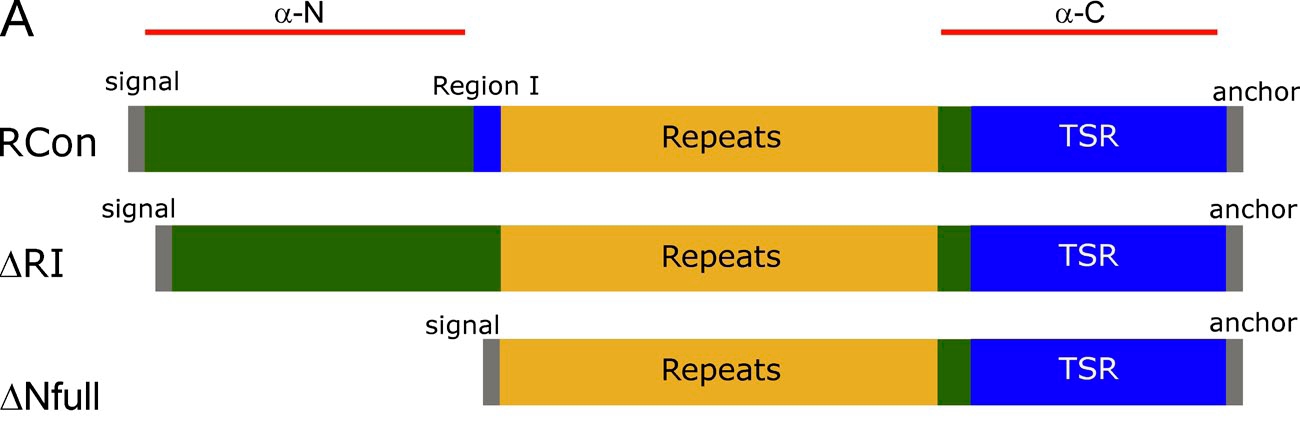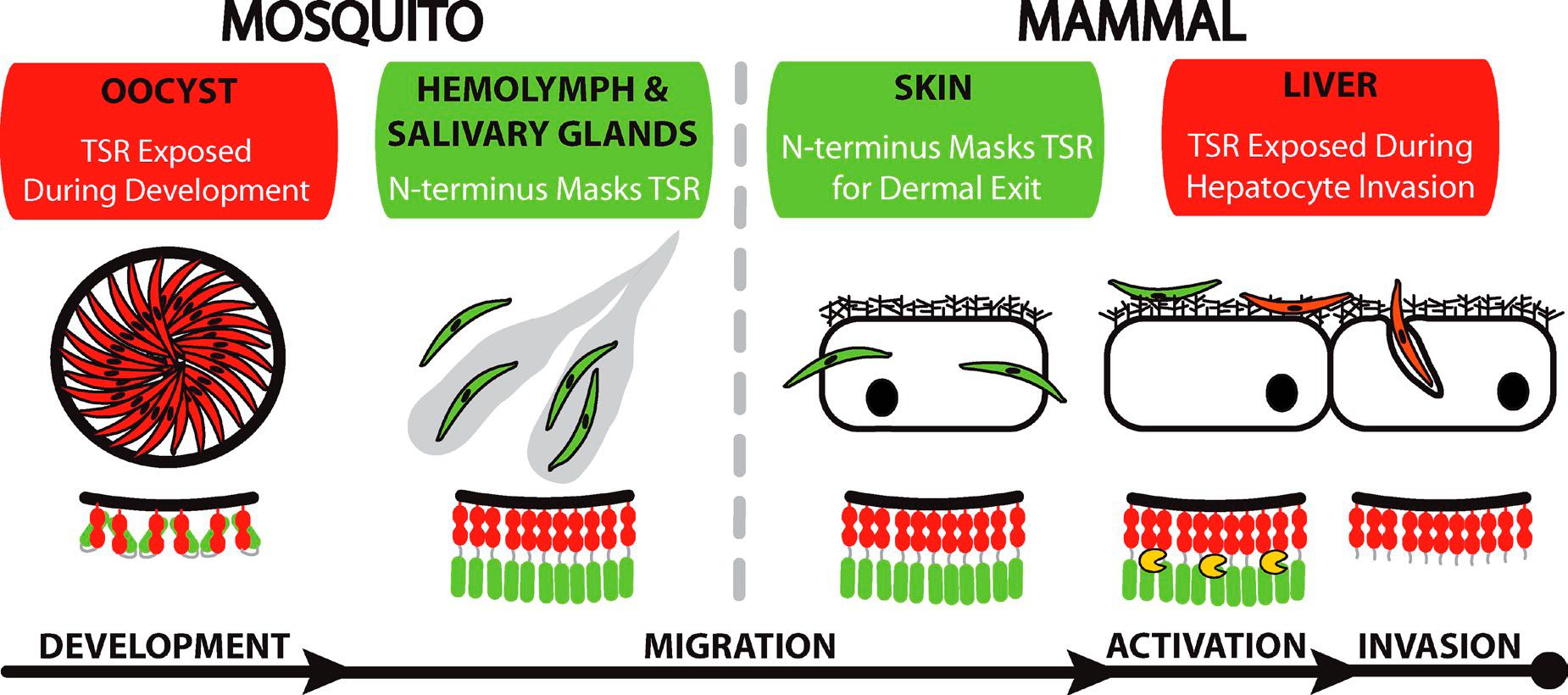SummaryRMgm-609
|
||||||||
 *RMgm-609
*RMgm-609| Successful modification | The parasite was generated by the genetic modification |
| The mutant contains the following genetic modification(s) | Gene mutation |
| Reference (PubMed-PMID number) |
Reference 1 (PMID number) : 21262960 |
| MR4 number | |
| top of page | |
| Parent parasite used to introduce the genetic modification | |
| Rodent Malaria Parasite | P. berghei |
| Parent strain/line | P. berghei ANKA |
| Name parent line/clone | Not applicable |
| Other information parent line | |
| top of page | |
| The mutant parasite was generated by | |
| Name PI/Researcher | A. Coppi; P. Sinnis |
| Name Group/Department | Department of Medical Parasitology |
| Name Institute | New York University School of Medicine |
| City | New York |
| Country | USA |
| top of page | |
| Name of the mutant parasite | |
| RMgm number | RMgm-609 |
| Principal name | ∆Nfull |
| Alternative name | |
| Standardized name | |
| Is the mutant parasite cloned after genetic modification | Yes |
| top of page | |
| Phenotype | |
| Asexual blood stage | Not different from wild type |
| Gametocyte/Gamete | Not different from wild type |
| Fertilization and ookinete | Not different from wild type |
| Oocyst | Mutant oocysts produced between 50 and 100% more sporozoites per oocyst compared with wild type oocysts. |
| Sporozoite | Mutant oocysts produced between 50 and 100% more sporozoites per oocyst compared with wild type oocysts. However, salivary glands contained 10-fold lower numbers of salivary gland sporozoites compared to wild type. Mutant salivary gland sporozoites showed a higher invasion efficiency of hepatocytes in vitro compared with wild type. Mutant salivary gland sporozoites showed a higher infectivity in vivo after intravenous inoculation. After intradermal inoculation, most sporozoites did not reach the liver but were trapped in the skin. |
| Liver stage | Mutant salivary gland sporozoites showed a higher invasion efficiency of hepatocytes in vitro compared with wild type. Mutant salivary gland sporozoites showed a higher infectivity in vivo after intravenous inoculation. After intradermal inoculation, most sporozoites did not reach the liver but were trapped in the skin. |
| Additional remarks phenotype | Mutant/mutation
Figure: A model for the role of CSP in the sporozoite's journey (from: Coppi et al., 2011, J. Exp. Med. 208, 341-56). Other mutants |
 Mutated: Mutant parasite with a mutated gene
Mutated: Mutant parasite with a mutated gene| top of page | |||||||||||||||||||||||||||
| Details of the target gene | |||||||||||||||||||||||||||
| Gene Model of Rodent Parasite | PBANKA_0403200 | ||||||||||||||||||||||||||
| Gene Model P. falciparum ortholog | PF3D7_0304600 | ||||||||||||||||||||||||||
| Gene product | circumsporozoite (CS) protein | ||||||||||||||||||||||||||
| Gene product: Alternative name | CS, CSP | ||||||||||||||||||||||||||
| top of page | |||||||||||||||||||||||||||
| Details of the genetic modification | |||||||||||||||||||||||||||
| Short description of the mutation | deletion of entire N terminus excluding the signal sequence (including region I) | ||||||||||||||||||||||||||
| Inducable system used | No | ||||||||||||||||||||||||||
| Short description of the conditional mutagenesis | Not available | ||||||||||||||||||||||||||
| Additional remarks inducable system | |||||||||||||||||||||||||||
| Type of plasmid/construct | Plasmid double cross-over | ||||||||||||||||||||||||||
| PlasmoGEM (Sanger) construct/vector used | No | ||||||||||||||||||||||||||
| Modified PlasmoGEM construct/vector used | No | ||||||||||||||||||||||||||
| Plasmid/construct map | |||||||||||||||||||||||||||
| Plasmid/construct sequence | |||||||||||||||||||||||||||
| Restriction sites to linearize plasmid | |||||||||||||||||||||||||||
| Selectable marker used to select the mutant parasite | hdhfr | ||||||||||||||||||||||||||
| Promoter of the selectable marker | pbdhfr | ||||||||||||||||||||||||||
| Selection (positive) procedure | pyrimethamine | ||||||||||||||||||||||||||
| Selection (negative) procedure | No | ||||||||||||||||||||||||||
| Additional remarks genetic modification | In the mutant the wild type csp is replaced with a mutated csp containing a specific deletion of entire N terminus, (including region I) and excluding the signal sequence (amino acids NKSIQAQRNLNELCYNEGNDNKLYHVLNSKNGKIYNRNTVNRLLADAPEGKKNEKKNEKIERNNKLKQP. The mutant CSP gene was generated using a PCR-based approach. Two gene fragments flanking the region to be deleted and including engineered or endogenous restriction sites were amplified and cut to yield fragments that when ligated make a CSP mutant containing the desired deletion. For the ∆Nfull mutant, the amino acids NKSIQAQRNLNELCYNEGNDNKLYHVLNSKNGKIYNRNTVNRLLADAPEGKKNEKKNEKIERNNKLKQP, which encompass the entire N terminus excluding the signal sequence, were deleted as follows: a 5’ 722-bp fragment was amplified using forward primer P5 (5’-AAAAAAGGTACCAAATATTATATGC-3’; existing KpnI site underlined) and reverse primer P6 (5’-AGAGCAGCTCGCCATATCCTGGAAGTAGAG-3’; introduced PvuII site underlined). Next, a 776-bp 3’ CSP fragment was amplified using forward primer P3 (5’- AGCGTAATAATAAATTGAAACAAAGGCCTCCACCACCAAACCC- 3’; introduced StuI site underlined) and reverse primer P4 (5’- TTATTTAATTAAAGAATACTAATAC-3’; existing PacI site underlined). Both PCR products were gel purified, digested SspI and StuI (resp.) to remove region 1, and ligated. The correct PmlI-PacI ligation product was determined by pcr and subsequently sub-cloned, sequenced and cloned into the pCSComp transfection plasmid. To generate the final pCSRep targeting construct that would replace the endogenous CSP locus, a CSP 5’UTR targeting region was cloned upstream of the selection cassette in pCSComp. The 5’UTR targeting region was obtained from p9.5∆E by PCR using p9.5∆E specific primers (see article). | ||||||||||||||||||||||||||
| Additional remarks selection procedure | |||||||||||||||||||||||||||
| |||||||||||||||||||||||||||
| top of page | |||||||||||||||||||||||||||




